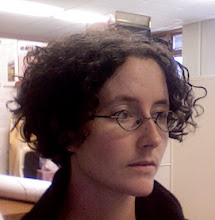Today we started on the FLP. We are looking at what habitats would be easiest for anoles to invade. There are two aspects we’re focusing on: available food and levels of predation. For food, we’re putting out sticky traps (like the kind you can buy for catching mice) and counting how many insects and spiders land on them. To measure levels of predation, we’ve made 80 plasticine anole models, attached them to sticks, and put them out. Hopefully things will attack them and then release when they realize it’s not a tasty anole after all, leaving bite marks for us to tally. The habitats we’re looking at are ground/tree-trunk vs canopy, and beach forest vs. upland. That means 20 trees on the beach and 20 trees in the upland habitat have an anole-on-a-stick leaning against their trunks and a second one stuck high in the canopy (either wedged in a hole or hanging from fishing line!) I’m skeptical about the method, but it’s been done before, and whether or not it works it’s interesting and worth a try.
One of the things I think I’m absorbing here is that good field biology involves a lot of creativity and a willingness to try things that seem unlikely. Because once in a while something works, and you find out interesting things you never would have discovered any other way! I’ve been told to just go and try, but I’m not sure I really understood what that meant before.
After lunch I headed into the upland forest by myself for a while, which was lovely. Then I had to head down quickly when I found the GI system was feeling sub-prime. I knew I’d have to get sick sometime, but it’s no fun. I have a huge collection of symptoms, which all might be just due to dehydration. So I’m drinking a lot and going to bed, hoping it doesn’t last.
I did get some cool birds today, though: streak-headed woodcreeper, red-crowned ant-tanager, yellow-throated euphonia, squirrel cuckoo, and gray-necked wood-rail.
Subscribe to:
Post Comments (Atom)

No comments:
Post a Comment